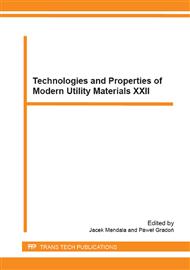p.23
p.29
p.33
p.39
p.43
p.49
p.53
p.59
p.65
Effect of Autogenous Laser Weld on Microstructure and Mechanical Properties of Inconel 617 Nickel Alloy
Abstract:
One of the most advanced manufacturing technologies is laser welding. Due to the limited power of the beam, the difficulty of precise preparation of the joint and the possibility of hardening in a narrow heat affected zone laser welding is used only for basic low carbon and low alloy steels. In this work the effects of autogenous weld parameters on microstructure and properties of the Inconel 617 alloy were studied. For this purpose the technological test of laser autogenous weld was performed.
Info:
Periodical:
Pages:
43-46
Citation:
Online since:
January 2015
Authors:
Keywords:
Price:
Сopyright:
© 2015 Trans Tech Publications Ltd. All Rights Reserved
Share:
Citation:


